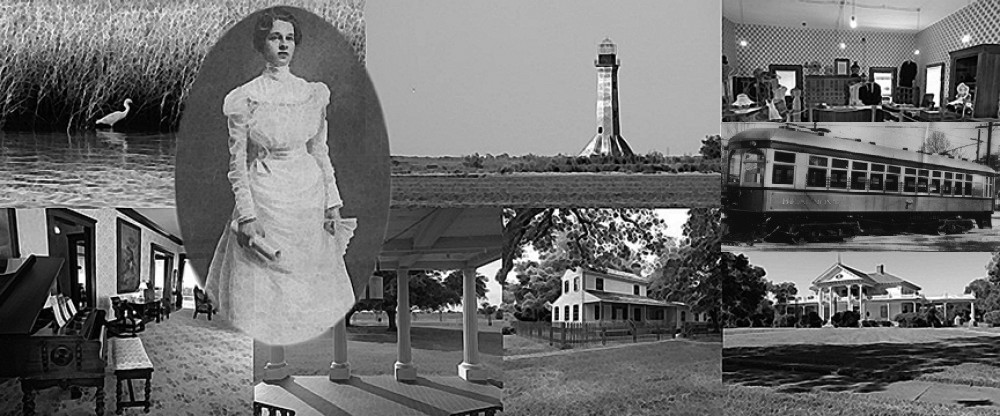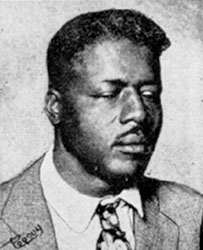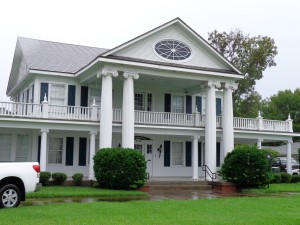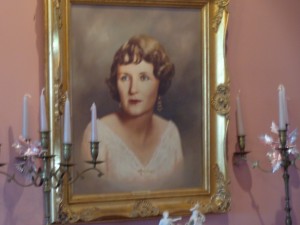It is when that orb sheds its full light across the lake that the story has its greatest attraction. Then the tale-tellers declare, in the silvery path across the twinkling water, sometimes can be seen a canoe bearing a boy and girl in strange clothing, paddling up the shimmering moon way.
The tribe of Kisselpoo, so runs the ancient story, lived by the lake; and she, the only child of the chieftain, had been born when the moon was full and was under the protection of the moon goddess.
When Kisselpoo was fifteen years old, tales of her beauty and ability had traveled far, and many braves from other tribes came to woo her. The one whom the leaders favored was head of several groups whose land adjoined to the north; and, although he was older than her father and already had many wives, arrangements were made for their marriage.
When nuptial preparations were far advanced, a stranger, whose home was seven sleeps distant toward the setting sun, arrived in the village. He was tall and straight as the pines, and for gifts he brought arm bands of a shining metal, set with stones like rainbows and like the blue of the skies. Kisselpoo loved him, but her wedding was set for the time when the moon would be at its brightest. That night as the luminous disc rose over the horizon, she waited in her finery for other maidens of the village to come to her father’s lodge and lead her to the elderly northern chief.
Instead, she heard the westerner’s deep voice softly speak her name, and with him she fled through reeds and grass to the lake where a canoe lay waiting. Swiftly they glided out on the water; but already the princess had been missed, and pursuit, led by the chieftain from the north and medicine men of her own tribe, was close. Her father did not participate in the chase, for he had dreamed a dream in which the moon goddess appeared to him and urged him to let his daughter wed the Indian from the west.
The medicine men called down the wrath of their gods, and a storm came up, ruffling the lake and upsetting the canoe, so that the eloping pair was last seen in the path of moonlight. Thereupon, the moon goddess, angered, called upon her kinsman, the storm god from the tropics, who rode in on a devastating hurricane. When at last the waves retreated into the Gulf, there was nothing left of the village or its inhabitants. The moon goddess decreed that the Lake of the River of Cypress Trees, for allowing itself to yield to the medicine men’s commands, should slowly disappear and all the streams that feed it bear down silt and mud to fill it.
For many moons after the great storm, the waters of the lake were clouded with mud, and its sandy bottom was covered with silt. The fish that were once abundant were now only a few. The sandy shores of the lake were stained, and shorebirds that once nested in the reeds and fished the shallow flats were gone. However, the spirit of the young lovers has remained with the lake that Kisselpoo loved so dearly. The moon goddess has shown forgiveness, and the lake is free of the curse that could have destroyed it. One can only assume that Kisselpoo had asked her protector, the moon goddess, to restore the beauty of the place of her birth. Now a swift current from the River of Cypress Trees is sweeping away the silt, and a fine sand shall again cover the lake floor.
With each new moon, the water becomes clearer, and great schools of fish have returned to the lake. Beautiful shorebirds and waterfowl have also returned to the sandy shores, along the salt marshes where alligators and furbearing animals abound. Meanwhile on a night when the full moon is rising, to those who have the power to see such things, appears the canoe with its two occupants who shall watch over Lake Sabine and protect its beauty until the last full moon.
—————————————————————————————————————-
Certainly an interesting legend from our past that should live on for many more moons! The Attacapas were the last of the Indian tribes to live in this area, but not the only ones. Past archaeological digs have been performed, finding many burial mounds along the banks of the Neches and Sabine rivers. There was also a mound found at Tyrrell Park in Beaumont years ago, dating back 10,000 years or so, if I can remember right.
Here in Port Neches, one of the most extraordinary archaeological finds would have been the six burial mounds 20 ft high, 60 ft wide, and 100 yrds long, located on the bluff where Joseph Grigsby built his home. I say ‘would have been’ because they were never excavated. The first was destroyed by Joseph Grigsby in preparation for his home and slave cabins; the second was disassembled in 1862 and used to build Fort Grigsby during the Civil War. Three more mounds were used for Beaumont’s roads, industries, and railroad right of ways. The last was destroyed by the Central Asphalt and Refining Company in 1902 while building its nearby refinery. I do understand using resources in time of need, but looking at it from a historical perspective this was a tragedy.
On a lighter note, one interesting fact about this legend is that it was the inspiration for J.P. (The Big Bopper) Richardson’s song Running Bear, recorded by Johnny Preston. Both J.P. and Johnny were Port Arthur natives and added their own history to our little patch of the world, which we will explore at a later date.
For now, tonight is the full moon. And what better way to spend the evening on the banks of Lake Sabine? Who knows…? You may even get a glimpse of a dark stranger in a canoe, along with his love, our own Princess Kisselpoo.




